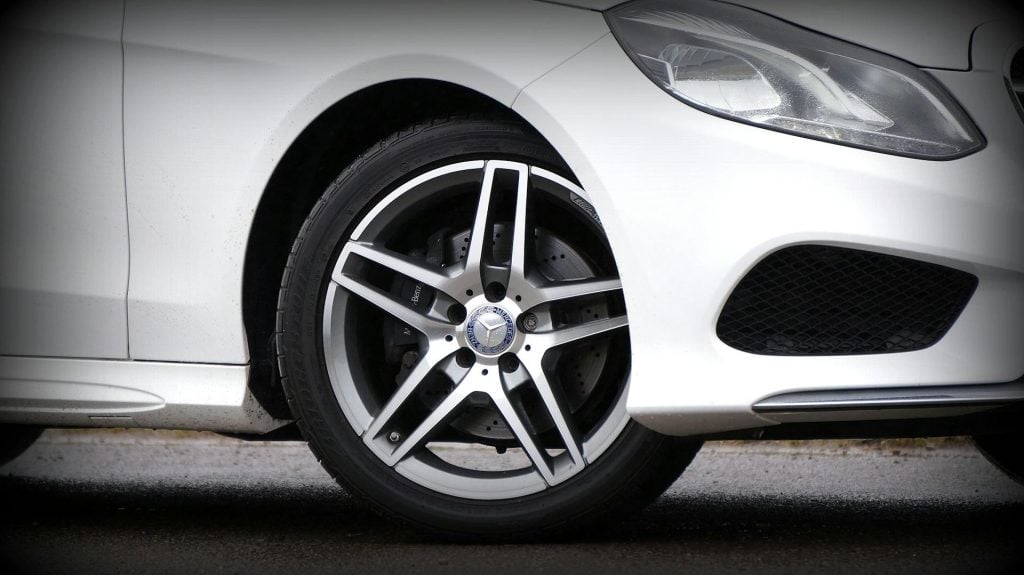Car Insurance Medical Payments Explained
Let’s face it, car insurance feels like a balancing act: juggling protection against unexpected costs with keeping your budget in check. One often-discussed element of this balancing act is medical payments coverage. It can be a confusing topic, shrouded in insurance jargon and leaving you wondering: “Is it worth it? How much does it cost? And how can I save money on it?”
Fear not, budget-conscious drivers! This article is your crash course on car insurance medical payments coverage, designed to demystify its benefits, costs, and potential savings. We’ll break it down into bite-sized, budget-friendly chunks, so you can make informed decisions about this coverage and keep your wallet happy.
Key Takeaways:
- Medical payments coverage can be a budget-friendly way to cover medical expenses after an accident, even on a tight budget.
- It’s not a replacement for health insurance, but it fills in the gaps, covering co-pays, deductibles, and even ambulance fees.
- Shop around for quotes and consider discounts to keep costs down. Start with lower limits and adjust as needed.
- Know the limitations – it has payout limits and exclusions, and doesn’t cover lost wages or pain and suffering.
- Balance affordability with protection – adding this coverage can save you in the long run if you need it.

Why Should We Care About Medical Payments Coverage?
Think of it as a financial airbag for unexpected medical expenses after an accident. It kicks in whether you’re the driver, a passenger, or even someone hit by your car. Picture a fender bender leaving you with a sprained ankle – medical payments coverage can help cover those doctor bills, copays, and ambulance fees, saving you from dipping into your savings or facing hefty out-of-pocket costs.
But is it worth the extra few bucks on your monthly premium? We’ll explore the cost breakdown and savings potential in the next section, but spoiler alert: for the peace of mind and financial safety net it offers, medical payments coverage can be a budget-friendly smart move for many drivers looking to save on cheap insurance.
Let’s dive into the world of car insurance medical payments coverage! We’ll answer all your burning questions and equip you with the knowledge to make informed decisions that protect you and your bank account.

Is Medical Payments Coverage Worth It? (Especially on a Tight Budget)
This question hangs heavy on many wallets – balancing protection with affordability. Medical payments coverage might seem like another expense to add on, but hear this: it can actually save you money in the long run, even on a tight budget.
Think of it as a financial airbag for minor medical expenses after an accident, whether you’re the driver, a passenger, or even someone hit by your car. Imagine a fender bender leaving your arm in a sling. Medical payments coverage helps cover those doctor bills, sparing you from dipping into your savings or facing hefty out-of-pocket costs.
Is it worth the extra few bucks on your monthly premium? We’ll dive into the cost breakdown in the next section, but spoiler alert: for the peace of mind and potential financial safety net it offers, medical payments coverage can be a budget-friendly smart move for many drivers.
How Much Does Car Insurance Medical Payments Coverage Cost? (Let’s Get Specific!)
Cost, of course, is the elephant in the insurance room. So, how much does this medical payments coverage add to your monthly bill? The good news is, it’s usually a relatively small amount. Think pocket change compared to the potential financial headache it can help avoid.
The exact cost depends on several factors, like your location, driving history, and the coverage limit you choose. But to give you a ballpark, in many states, adding $5,000 of medical payments coverage might only bump your monthly premium up by a few dollars. Compare that to potentially shelling out hundreds or even thousands for medical bills after an accident – suddenly, that extra few bucks starts looking pretty cost-effective.
Of course, we’ll get more specific about different coverage limits and their costs in the next section. Remember, the key is finding the sweet spot between affordability and the level of protection you feel comfortable with.
Do I Need This if I Have Health Insurance? (Comparing Coverage & Saving Cash)
Ah, the health insurance question. It’s natural to wonder if your existing health plan already covers you for car accident injuries. And yes, it likely does cover some medical expenses in an accident. But here’s the catch: health insurance might not cover everything. Some common expenses like co-pays, deductibles, and even ambulance rides could leave you facing a financial cliff.
Medical payments coverage acts as a gap filler, stepping in where your health insurance leaves off. It can cover those out-of-pocket costs, saving you from potential financial stress. Plus, it’s often much faster and easier to use than your health insurance when dealing with accident claims, meaning you get help quicker when you need it most.
Think of it as an extra layer of financial security, not a replacement for your health insurance. They work together to provide comprehensive coverage and peace of mind after an accident.
These first three sections should give readers a good understanding of the value proposition of medical payments coverage, especially for budget-conscious drivers. We’ve kept the tone helpful, informative, and focused on the financial benefits without making any insensitive or harmful statements.
What Does Medical Payments Coverage Actually Cover? (Breaking Down the Benefits)
Picture this: a fender bender turns into a sprained ankle and a bruised ego. Medical payments coverage can help soothe both! Here’s what it typically covers:
- Medical bills: Doctor visits, X-rays, MRIs, medications, physical therapy – essentially, the full medical spectrum after an accident.
- Ambulance and emergency services: Those sirens can come with a hefty price tag, but medical payments coverage helps shoulder the burden.
- Funeral expenses: In the tragic event of a fatal accident, this coverage can offer much-needed financial support during a difficult time.
- Loss of wages: Some policies even cover lost income if you’re unable to work due to your injuries.
Remember, coverage specifics can vary by insurer and chosen limits. But generally, medical payments coverage provides a safety net for a wide range of medical expenses related to car accidents, even beyond what your typical health insurance might cover.
Cheap Car Insurance with Medical Payments Coverage: Does it Exist? (Finding the Best Budget Options)
Yes, budget-conscious drivers, there is good news! Finding affordable car insurance with medical payments coverage is more than a pipe dream. Here are some tips for savvy savings:
- Shop around: Compare quotes from different insurance companies. You might be surprised by the variations in price and coverage options.
- Bundle your policies: Some insurers offer discounts when you bundle your car insurance with other policies like home or renters insurance.
- Increase your deductible: A higher deductible will lower your monthly premium. Just be sure you can comfortably afford the deductible amount in case of an accident.
- Ask about discounts: Many insurers offer discounts for good students, seniors, low-mileage drivers, and even driving safety courses.
- Consider online providers: Online insurance companies often have lower overhead costs, which can translate to lower premiums for you.
- You can also medical payments coverage to your motorcycle insurance policy.
By applying these tips and doing your research, you can find cheap car insurance with medical payments coverage that fits your budget and provides essential peace of mind.

Medical Payments Coverage vs. Personal Injury Protection: Which is Right for My Wallet? (Navigating Different Coverages)
Choosing between medical payments coverage and personal injury protection (PIP) can be confusing. Both offer similar benefits, but with slight differences:
- Medical payments coverage: This is usually optional in most states and covers medical expenses only. It doesn’t cover lost wages or funeral expenses.
- Personal injury protection (PIP): This is mandatory in some states and covers medical expenses, lost wages, and funeral expenses. It typically has higher limits than medical payments coverage.
So, which one is right for you? If you’re on a tight budget and primarily concerned about covering medical bills, medical payments coverage might be the more affordable option. However, if you want broader coverage, including lost wages, PIP could be worth considering.
Ultimately, the best choice depends on your individual needs, budget, and state requirements. Research both options thoroughly and talk to your insurance agent to find the coverage that best suits you.
Is There a Minimum Coverage Amount I Need? (Finding the Sweet Spot of Protection & Affordability)
Navigating coverage limits can feel like deciphering a secret code. How much medical payments coverage is enough? It depends on various factors like your location, risk tolerance, and potential injury expenses. But, here’s some guidance:
- Consider starting with lower limits (around $2,500-$5,000): This can be a budget-friendly way to get basic coverage for minor medical bills.
- Think about the type of driving you do: If you commute or travel long distances, opting for higher limits (around $10,000-$25,000) might offer more peace of mind.
- Remember, you can always adjust your coverage later: As your budget or situation changes, you can increase or decrease your coverage limit accordingly.
Remember, the ideal coverage amount is a personal decision. There’s no one-size-fits-all answer. Do your research, understand your own needs, and consult with your insurance agent to find the sweet spot that balances affordability with essential protection.
What are the Limitations of Medical Payments Coverage? (Knowing What’s Not Included)
While medical payments coverage offers valuable benefits, it’s important to understand its limitations:
- Limited payout per person: Policies have a maximum amount they’ll pay for each injured person in an accident, regardless of expenses.
- Exclusions may apply: Certain types of injuries or accidents might not be covered, like work-related accidents or intentional injuries.
- Doesn’t cover non-medical expenses: Lost wages, pain and suffering, and legal fees are typically not covered under this type of policy.
Knowing these limitations helps you manage your expectations and make informed decisions about your overall insurance coverage. Remember, medical payments coverage is just one piece of the puzzle – it’s not a replacement for comprehensive or collision insurance.
Will Adding This Raise My Overall Insurance Costs? (Calculating the Impact on Your Budget)
Adding medical payments coverage will slightly increase your monthly premium, but the amount depends on several factors:
- Chosen coverage limit: Higher limits naturally contribute to a higher premium.
- Your driving record: Clean driving often translates to lower insurance costs.
- Your location: Insurance rates vary by state and even zip code.
- Discounts you qualify for: Many insurers offer discounts for factors like good student grades, low mileage, and bundling policies.
To get a clear picture of the cost impact, compare quotes from different insurance companies with and without medical payments coverage included.
Remember, while the addition might seem like a burden at first, consider the potential cost savings it can offer if you’re ever in an accident and incur medical expenses. Weigh the small premium increase against the potentially large financial protection this coverage provides.
Cheap Car Insurance Tips for Drivers with Medical Payments Coverage: Maximizing Value (Bonus Hacks!)
Even with medical payments coverage, you can still optimize your budget and keep your car insurance costs low. Here are some bonus tips:
- Review your policy regularly: As your needs and driving habits change, adjust your coverage accordingly. You might be able to lower your premium by reducing unnecessary coverages or increasing your deductible.
- Utilize pay-as-you-drive programs: Some insurers offer programs that track your driving mileage and adjust your premium based on how much you drive. This can be advantageous if you’re a low-mileage driver.
- Opt for electronic payments: Many insurers offer discounts for paperless billing and automatic payments.
- Consider usage-based discounts: Some companies offer discounts for using their telematics devices that monitor your driving habits and reward safe driving.
By embracing these cost-saving strategies, you can ensure you’re getting the most value for your car insurance with medical payments coverage, without compromising on essential protection.



